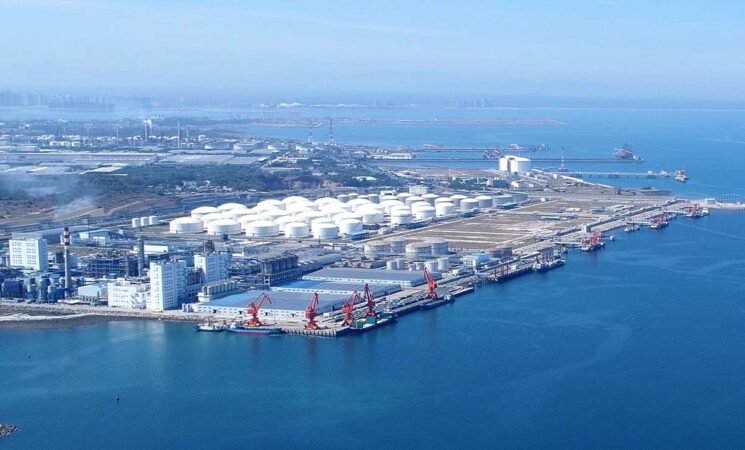9 November 2025, NIICE Commentaries 11908
Dr Chander Shekhar
On 06 November 2025, Xi Jinping officially has announced the long-awaited China’s new generation opening up 2.0 by establishing the Hainan Free Trade Port (FTP). During his speech in Sanya city, a gateway to China’s southern region, his emphasises on adopting high standards for building a free trade port to “deepen reform and opening up in the new era”, would change the ocean-based trade trajectory connecting with major oceans of the world, showed commitment of its free trade approach with the PRC characteristics amidst the rise of unilateralism and protectionism around the world. The success of such new model depends on geopolitical dynamics and encouragement of free trade norms for expanding maritime economy to create further in the future a chain of free trade ports to expand the role of maritime economy and shipping, it also shows the South China Sea with which the program is connected China signals to advance liberalization policies, advance trade and investment and facilitate free flow of products with zero tariffs, with external partners, including the Global South countries can utilize this new initiative for inclusive development and prosperity.
Hainan Free Trade Port: China’s New Invention and Potentials
Hainan holds a significant strategic place in Chinese security, strategic and blue economic scholarship. Its role in the country’s economic growth and maritime economy cannot be overlooked as it connects with the entire South China Sea, from where annually trillions of dollars of trade pass through. It has transformed the country’s past and present economic trajectory, now heading towards future-shaping economics of growth with the principles of the WTO. The major emphasis is on strengthening the blue economy vision and encouraging other entities to integrate.
The formation of the Hainan Free Trade Port, which was launched in June 2020, demonstrates a major development in the country’s economic and maritime strategy in line with and to achieve the World Trade Organisation’s objectives. Hainan’s imports and exports figures show that in the year 2024 it has gone to achieve over 277.65 billion yuan, which is a 20 percent increase from 2023 and over 200 per cent increase from 2020.
Likewise, experts believe that the genesis of such innovative opening up initiatives has its roots in the 1980s decade, with their first special economic zones beginning in Guangdong province, followed by national and pilot free trade zones. Having been approved in the year 2018, it is backed by the Hainan Free Trade Port Law. The Initiative envisions island-wide, independent customs operations, which is about to set to launch on 18 December 2025.
Provided a new concept, the trade port can be described as an “open, modern, and competitive free trade environment, with ambitions to become a leading global trade hub by 2035, with unique features such as zero tariffs, liberalised norms, etc. It is believed that in the area of trade, Hainan’s zero tariff policy, a measure to boost trade volume and integration, will likely be applied to over 74 per cent of imported goods; besides, it is likely to open windows of investment in areas such as tourism, modern services and emerging critical technologies.
President Xi underlines that it is the landmark move to “expand high-standard opening up and promote the development of an open world economy” for a shared and common future. The Hainan province plays a significant role in connecting inter-regional cities and major provincial economies. Under the project, the Southern Hainan city would also coordinate with other neighbouring areas such as the Guangdong-Hong Kong-Macao Greater Bay Area, Beijing-Tianjin-Hebei region and others like the Yangtze River. The purpose of it is to create “a competitive integrated hub for cross-border trade”, having development milestones for 2025, 2035, and 2050.
Under the HFTP, it was agreed that from 18th December, another major “favourable tariff policies will be implemented in which “the proportion of products eligible for zero tariffs will rise sharply from 21 to 74 percent”. With its potential in the growth of the international economy, more than 40 key agreements have already been signed in various sectors, including biopharmaceuticals, high-end manufacturing, digital economy, tropical agriculture and aerospace technology. This shows the proactive participation by private entities, such as Huawei and Unitree Robotics.
Last year in December 2024, President Xi had underlined the importance and future pathways of Hainan province and its critical roles in driving the Chinese economy beyond a fictitious vision. In the HFTP, more than 6,600 product categories, which are over 74 percent of all taxable items, will be exempted from “import duties, value-added tax and consumption tax, and also foreign goods will also be qualified for the exception as per China’s regulations.”
Pundits claim that by 2035 the two largest trading partners in Asia, China and ASEAN, are set to drive the engine of Asian economic growth, so Hainan could be seen as a “strategic conduit” here, which connects China’s largest market with the largest ever trading agreement, the Regional Comprehensive Economic Partnership (RCEP).
India, in its Maritime Amrit Kal Vision 2047, has placed a significant emphasis on maritime port-led development as it has 200 minor ports, 13 major ports that carry over 95 percent of the country’s trade by volume. It is also a top priority for India, given its long coastlines and maritime heritage, shaping its future port-driven economic growth.
Conclusion
So, the Hainan initiative can be utilised for international trade port development, which is and shall not be limited just to China’s mainland and its periphery. It should have major global spill-over effects, especially for the global south countries struggling to converge and develop economically, in spite of having more potential. Challenges to implement it will remain, and countries are also suspicious of China’s trade port model due to its economic scholarship has transformed its economic and political depth over decades. Trump’s re-engagement with China proves and has global effects on trade and supply chain architecture.
Dr Chander Shekhar, Researcher and Author at the Centre for International Politics, Organisations and Disarmament, Jawaharlal Nehru University, New Delhi, India.

